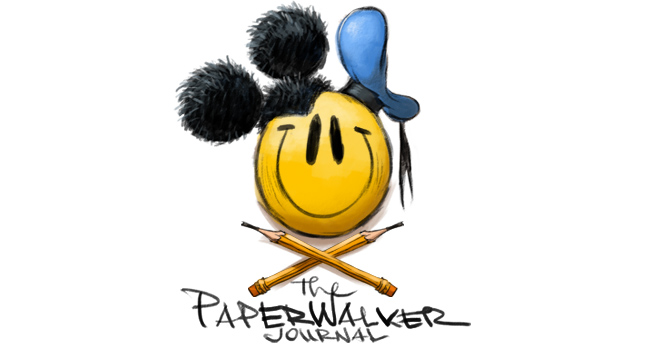"I did get one letter from one southern editor who said something about 'I don't mind you having a black character, but please don't show them in school together.' Because I had shown Franklin sitting in front of Peppermint Patty. But I didn't even answer him."
Charles M. Schulz
"I always refer to Franklin as my fourth child."
Harriet Glickman

April 15, 1968
Dear Mr. Schulz,
Since the death of Martin Luther King, I've been asking myself what I can do to help change those conditions in our socienty which led to the assassination and which contribute to the vast sea of misunderstanding, fear, hate and violence.
As a suburban housewife, the mother of three children and a deeply concerned and active citizen, I am well aware of the very long and tortuous road ahead. (...)
It occurred to me today that the introduction of Negro children into the group of Schulz characters could happen with a minimum of impact. the gentleness of the kids...even Lucy, is a perfect setting. The baseball game, kite-flying...yes, even the Psychiatric Service cum Lemonade Stand would accomodate the idea smoothly.
Sitting alone in California suburbia makes it all seem so easy and logical. I'm sure one doesn't make radical changes in so important an institution without a lot of shock waves from syndicates, clients, etc. You have, however, a stature and reputation which can withstand a great deal.
Lastly; should you consider this suggestion, I hope that the result will be more than one black child...Let them be as adorable as the others...but please...allow them a Lucy!
Sincerely,
Harriet Glickman
(full letter: link)

April 27, 1968
Dear Mr Schulz,
I appreciate your taking the time to answer my letter about Negro children in Peanuts.
You present an interesting dilemma. I would like your permission to use your letter to show some Negro friends. Their response as parents may prove useful to you in your thinking on this subject.
Sincerely,
Harriet Glickman
(original letter: link)

On 15th of April 1958, suburban school teacher Harriet Glickman and "father of the Peanuts" Charles Monroe Schulz (1922-2000) started exchanging letters expressing their concerns about the world of Peanuts lacking a black character and how to best introduce one. Glickman contacted her black US-American friends for advice, one of the mothers wrote:
"At this time in history, when Negro youths need a feeling of identity; the inclusion of a Negro character even occasionally in your comics would help these young people to feel it is a natural thing for Caucasian and Negro children to engage in dialogue." (via)

Glickman wanted to send more letters but two "had won the cartoonist over". On 1st of July, Schulz wrote Glickman that he had taken "the first step" (via) and asked her to check the paper during the week of 29th of July: "I have drawn an episode which I think will please you." (via). And there he was: Franklin. Franklin made his debut in the comic strip on 31st of July 1968 (via), "without fanfare" and without any comment on his ethnicity. "He and Charlie Brown struck up a friendship just like any two kids who meet on the beach might do." (via). Franklin appeared for three days in a row and became a regular character. In general, response from readers were positive. Objection came mostly from southern US-states; some papers refused to run the series (via). On 12th of November 1969, the United Feature Syndicate sent a letter writing (via):
Gentlemen:
In today's "Peanuts" comic strip Negro and white children are portrayed together in school.
School integration is a sensitive subject here, particularly at this time when our city and county schools are under court order for massive compulsory race mixing.
We would appreciate it if future "Peanuts" strips did not have this type of content.
Thank you.

"Franklin is thoughtful and can quote the Old Testament as effectively as Linus. In contrast with other characters, Franklin has the fewest anxieties and obsessions."
Charles Schulz
"Franklin’s introduction was part of a five-day sequence featuring Sally tossing away Charlie Brown’s beach ball and Franklin rescuing it. In some ways, this seems an aggressive bit of integration - many American public beaches, while no longer legally segregated, were still de facto segregated at the time. In other ways, the strips suggest what might be seen today as an excess of caution; of the twenty panels of the series, Franklin is in ten panels and Sally is in eight, but never is Franklin in the same panel as the white girl. Franklin would not reappear for another two and a half months, when he came for a visit to Charlie Brown’s neighborhood. He was somewhat lighter skinned here, which seems to be less a matter of trying to make him acceptable to the readers and more a matter of cutting back on shading lines which were overpowering his facial features. Franklin’s job in this series was to react to the oddness of the neighborhood kids, and that was a precursor to what would be his primary role in the strip as a whole. Perhaps due to excessive caution, Franklin was never granted any of the sort of usual quirks that define a Peanuts character, the very sort of mistake that Glickman was warning about when she called for one of the black kids to be “a Lucy.” Schulz may have had more to work with if he had listened to Bishop James P. Shannon, who had marched beside Martin Luther King in Selma; Shannon was quoted in the Los Angeles Times as wondering if the new Peanuts character would be “a believable human being who has some evident personal failing,” versus being “a perfect little black man.” But whatever failings (or problematic lack of failings) Franklin may have had, his appearance drew national media coverage, and made local comics page editors flinch." (literally via)

"Schulz understood the tightrope he had to walk because of earlier offensive portrayals of blacks in the media. So he made a deliberate choice not to give Franklin any of the negative traits that plagued the other Peanuts characters." Well, nobody said that it would be easy. Clarence Page, Chicago Tribune columnist put it this way (via):
"Let's face it: His perfection hampered Franklin's character development… But considering the hyper-sensitivities so many people feel about any matters involving race, I did not blame Schulz for treating Franklin with a light and special touch. Can you imagine Franklin as, say, a fussbudget like Lucy? Or a thumb-sucking, security-blanket hugger like Linus? Or an idle dancer and dreamer like Snoopy? Or a walking dust storm like Pig Pen? Mercy. Self-declared image police would call for a boycott. If Schulz's instincts told him his audience was not ready for a black child with the same complications his other characters endured, he probably was right."

Excerpt from an interview by Michael Barrier (via):
BARRIER: Have there been occasions when United Features has sent back a strip, or said, "We're really worried about this one?"
SCHULZ: Yeah. There were only two occasions. One was a long time ago; Linus's blanket suddenly took on a life [of its own] and began to attack Lucy. Larry Rutman called; this scared him to death. He thought for sure that it would frighten children, that the blanket doing this would frighten the child reader. Which was ridiculous, when you think of the things that they see in other places. I remember I finished up the little series and let it go at that. Later on, when Franklin was introduced into the strip, the little black kid - I could have put him in long before that, but for other reasons, I didn't. I didn't want to intrude upon the work of others, so I held off on that. But I finally put Franklin in, and there was one strip where Charlie Brown and Franklin had been playing on the beach, and Franklin said, "Well, it's been nice being with you, come on over to my house some time." Again, they didn't like that. Another editor protested once when Franklin was sitting in the same row of school desks with Peppermint Patty, and said, "We have enough trouble here in the South without you showing the kids together in school." But I never paid any attention to those things, and I remember telling Larry (comment: Larry Rutman, president of the United Features syndicate) at the time about Franklin—he wanted me to change it, and we talked about it for a long while on the phone, and I finally sighed and said, "Well, Larry, let's put it this way: Either you print it just the way I draw it or I quit. How's that?" So that's the way that ended. But I've never done much with Franklin, because I don't do race things. I'm not an expert on race, I don't know what it's like to grow up as a little black boy, and I don't think you should draw things unless you really understand them, unless you're just out to stir things up or to try to teach people different things. I'm not in this business to instruct; I'm just in it to be funny. Now and then I may instruct a few things, but I'm not out to grind a lot of axes. Let somebody else do it who's an expert on that, not me.


images via and via and via and via and via and via and via and via and via
PEANUTS © Peanuts Worldwide LLC. All rights reserved.





































































Awesome, thanks for posting this!
ReplyDeleteCheers! I'll tell Laura http://moazedi.blogspot.com ! She's the one behind this posting.
Delete